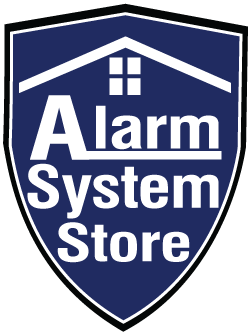
How do I wire a DSC PC5108?
To connect the expansion board to the control panel you will need connect the four wire keybus terminals: RED, BLK, YEL, and GRN. These can be home run to the control panel or connected in parallel to another module or keypad. The wire distance to the module cannot exceed 1000 feet. And the total wire distance on the keybus cannot exceed 3000 feet.
The zones will wire in exactly the same fashion as the main control panel: zone terminal to COM terminal with the normally closed sensors in series. Series wiring is + to - to + to - and so on. Or because the polarity in zone wiring does not really matter you can think in terms of colors: yellow to green to yellow to green and so on. In this way you can trace one continuous loop through the circuit from one zone terminal to the other when all contacts are closed. But if one contact opens then the entire loop is broken with no way to go through the circuit from one terminal to the other.
For normally open sensors, you will wire in parallel. Parallel wiring basically the opposite. It goes + to + to + and - to - to - through the entire circuit. Or green to green to green and yellow to yellow to yellow. In this case, the zone is secure if all sensors are open and there is no way to go from one zone terminal to the other through the circuit. But if one sensor closes then you can go from one terminal through the green wire, across the sensor, back down the yellow wire to the other zone terminal. It doesn't matter which sensor in line closes, as long as one is closed the circuit will be complete.
If you are using end of line resistors those would go at the last device in the zone circuit. If you do not put them at the end of the line they will not function in the way they are supposed to. Basically they are supposed to monitor the wire between the resistor and the panel for things like shorts or cuts. If they are placed directly on the PC5108 for instance, they will not monitor anything since there is no wire between it and the panel to be damaged. For more information on end of line resistors watch our alarm resistor video on YouTube.
We recommend keeping zones to as few sensors as possible, preferably 1 sensor per zone. This will make the zone wiring concepts simpler while giving the system more detail. You can know exactly which sensor is tripped in an alarm. Or if you are doing troubleshooting, you will know exactly which sensor is faulty or which stretch of wire. Or if the system says it is not ready to arm you can easily find which zone is open.
If there is a sensor that requires auxiliary power you can connect that to the PC5108 as well. The positive DC power terminal on the sensor would connect to the VAUX (+) terminal. And the negative DC power terminal would connect to the BLK (-) terminal. The total current draw connected to the VAUX + terminal cannot exceed 100mA of current draw. We also recommend keeping a 10% buffer here to be on the safe side.
And finally, one of the most commonly overlooked parts of wiring this and other modules is the tamper circuit. This is used to connect something like a cabinet tamper switch so that the alarm system would have a trouble condition if someone opens the cabinet. If this happens while the system is armed it would cause a burglary alarm. You would connect that switch to the TAM terminal and to the BLK terminal. You are not required to use a tamper switch on every module or even any module though. But you will still need to close the circuit from TAM to BLK to avoid the tamper trouble condition. You can wire a short piece of wire from one terminal to the other so that it will always see a closed circuit there.



